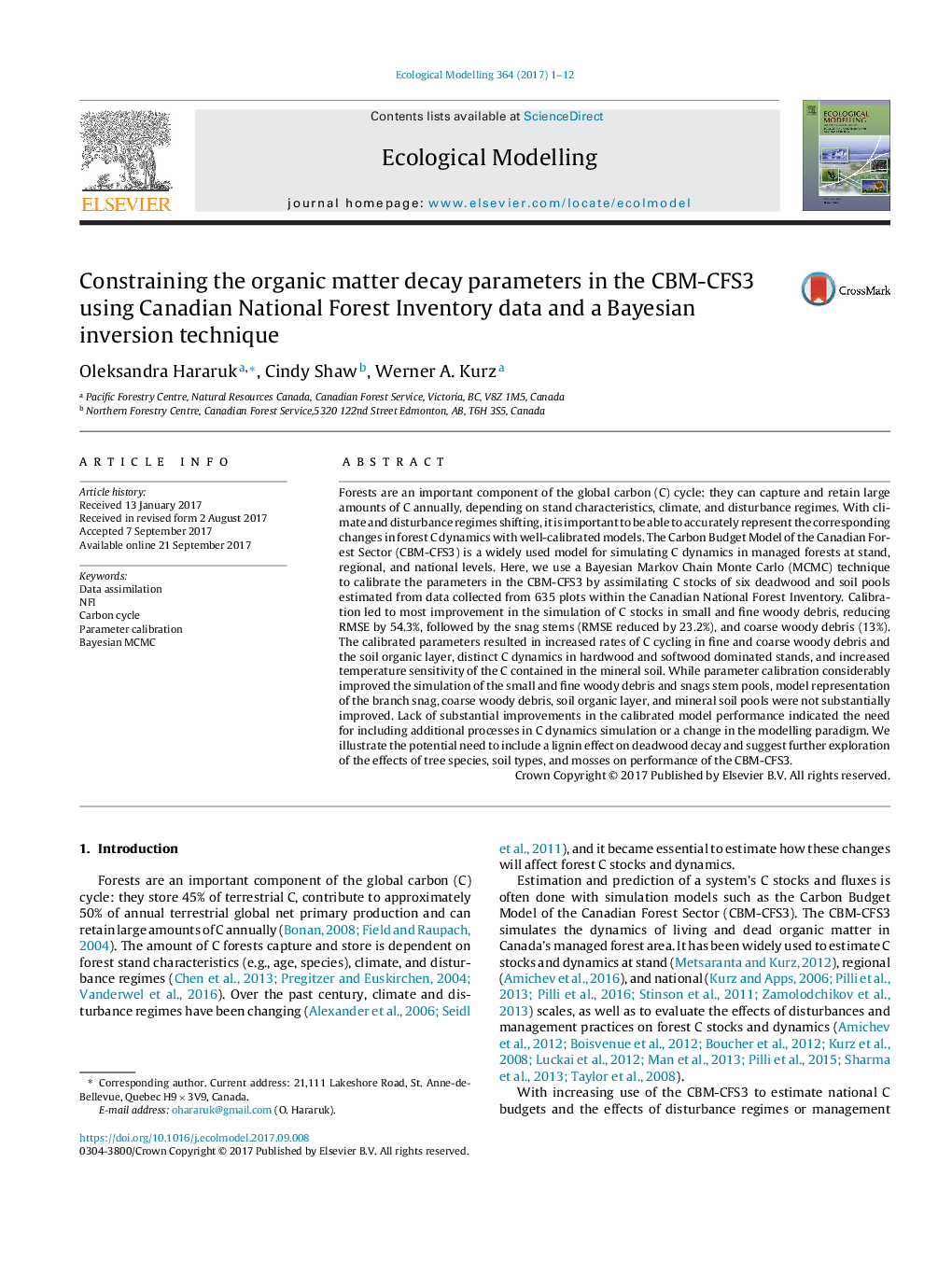| Article ID | Journal | Published Year | Pages | File Type |
|---|---|---|---|---|
| 5741977 | Ecological Modelling | 2017 | 12 Pages |
â¢Forests are an important component of global carbon budget.â¢Models, are essential for assessing forest carbon budget and its future state.â¢Models can have substantial errors in their predictions.â¢Using CBM-CFS3 we show that these errors can be reduced by data assimilation.â¢We also discuss which changes could improve the performance of CBM-CFS3.
Forests are an important component of the global carbon (C) cycle: they can capture and retain large amounts of C annually, depending on stand characteristics, climate, and disturbance regimes. With climate and disturbance regimes shifting, it is important to be able to accurately represent the corresponding changes in forest C dynamics with well-calibrated models. The Carbon Budget Model of the Canadian Forest Sector (CBM-CFS3) is a widely used model for simulating C dynamics in managed forests at stand, regional, and national levels. Here, we use a Bayesian Markov Chain Monte Carlo (MCMC) technique to calibrate the parameters in the CBM-CFS3 by assimilating C stocks of six deadwood and soil pools estimated from data collected from 635 plots within the Canadian National Forest Inventory. Calibration led to most improvement in the simulation of C stocks in small and fine woody debris, reducing RMSE by 54.3%, followed by the snag stems (RMSE reduced by 23.2%), and coarse woody debris (13%). The calibrated parameters resulted in increased rates of C cycling in fine and coarse woody debris and the soil organic layer, distinct C dynamics in hardwood and softwood dominated stands, and increased temperature sensitivity of the C contained in the mineral soil. While parameter calibration considerably improved the simulation of the small and fine woody debris and snags stem pools, model representation of the branch snag, coarse woody debris, soil organic layer, and mineral soil pools were not substantially improved. Lack of substantial improvements in the calibrated model performance indicated the need for including additional processes in C dynamics simulation or a change in the modelling paradigm. We illustrate the potential need to include a lignin effect on deadwood decay and suggest further exploration of the effects of tree species, soil types, and mosses on performance of the CBM-CFS3.
